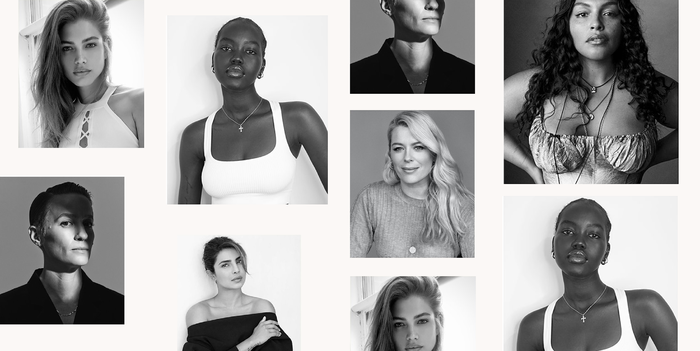The reinvention of Tiffany
Fashion Editor Olivia Rhodes explores the changes implemented on Tiffany & Co, lamenting the apparent loss of all that has made the brand so iconic

A little blue box tied with a white ribbon in a perfect bow. My experience with Tiffany was infinitely special: an eighteenth birthday present that had long been lusted after. Admittedly, my classic heart necklace finds its place in the Fiat 500 school of teenage-girl-basic, but for me it transcends this judgement into something else, mimetic instead of timeless fashionable femininity. Of course, much of this is down to the iconic film adaptation of Truman Capote’s Breakfast at Tiffany’s, a sparkling diamond in Hollywood’s crown in which an inimitably stunning Audrey Hepburn sweeps through New York as Holly Golightly, the epitome of effortless glamour. And since then, Tiffany has become an emblem of this kind of simple elegance — until now.
The multi-billion purchase of Tiffany by French conglomerate LMVH Moët Hennessy Louis Vuitton early in 2021 brought in new leadership, and, with it, a whole new attitude to what Tiffany stands for. The rebranding from Tiffany Blue to Tiffany Yellow on April 1st at the Rodeo Drive store in Los Angeles was a sure-fire way to signal revolutionary new ownership, so shocking that it was naturally assumed to be an April Fool’s joke. “We’d never mess with Tiffany Blue”, an Instagram post from the next day promises, “but we do have some exciting new things in the works”. The inclusion of a trademark symbol makes evident the cruciality of the colour, but these “plans”, worryingly for most, are for Tiffany Yellow to find itself established in stores across the globe. In the words of luxury consultant and ex-LVMH employee Alain Huy, “[LMVH] touch what for all history has been the untouchable”: in this case, the seemingly unshakeable Tiffany Blue.
“the brand whose legacy was as glittering as its diamonds seems, lamentably, to be tarnishing”
Three months later, this new Tiffany made a splash across LA once again as the ‘Not Your Mother’s Tiffany’ campaign began to appear, the internet soon ablaze with loyal Tiffany customers calling it “disgusting”, “disrespectful”, “vulgar”. One Instagram user commented, “I’m a mom… Am I not good enough? Am I too embarrassing? Too old?”, exemplifying the sadness and frustration that the slogan incurred on a huge proportion of Tiffany customers. The campaign is supposedly an attempt to reform Tiffany in order to attract a younger audience — but surely this should not mean ostracising those who have loved the brand for decades and massively contributed to its iconicity? The most fatal mistake of this zeitgeisty, contemporary approach, however, is that it isn’t what ‘young people’ want. Vintage fashion is very much on the rise, and current trends aren’t really ‘current’ at all, but instead are recycled from decades gone by. We raid the wardrobes of our mothers and grandmothers for vintage, pre-loved pieces. We want our mother’s Tiffany.
Learning, perhaps, from the outrage of ‘Not Your Mother’, Tiffany’s most recent campaign is a little less confronting, but certainly aligns with the modernisation of the brand’s image. Beyoncé and Jay Z are the faces of this season’s campaign, and the choice of such celebrated icons for millennials and Gen-Zs is a more appropriate way to draw them to Tiffany. The exclusive Basquiat painting, however, is jarringly distracting — its blue background the only aspect which aligns it with the brand, the chalky scribbles far from the refined elegance previously synonymous with Tiffany.
Meanwhile, the dressing of Beyoncé in the 128.54-carat Tiffany Diamond (only ever worn by Audrey Hepburn and Lady Gaga) and Givenchy as a painfully obvious parallel to Hepburn’s most famous costume, targets those who search for the continuation of the classic and iconic. But did this have to be done so explicitly, so obviously? It seems a messy way to re-appeal to those offended by having their Tiffany portrayed as worn-out and tired — reverting back to the origins under the transparent guise that nothing has changed. But everything has changed, and is showing no signs of stopping.
To end where it began, returning to Capote, I cannot help but be reminded by his words in Breakfast at Tiffany’s. “It is a natural thing that we should change”, he wrote. And yet, the changes that unfurl upon Tiffany feel anything but natural. In an entirely unexpected turn of events, the brand whose legacy was as glittering as its diamonds seems, lamentably, to be tarnishing, dulling, and irretrievably slipping away into unfamiliarity. Let us all hope it finds its sparkle again.
 News / Under 3% of applicants for Cambridge academic jobs are successful7 April 2025
News / Under 3% of applicants for Cambridge academic jobs are successful7 April 2025 News / News in Brief: cats, Camelot, and construction woes6 April 2025
News / News in Brief: cats, Camelot, and construction woes6 April 2025 Comment / Cambridge’s gossip culture is a double-edged sword7 April 2025
Comment / Cambridge’s gossip culture is a double-edged sword7 April 2025 Features / Cambridge: where toxic productivity turns rest into a radical act8 April 2025
Features / Cambridge: where toxic productivity turns rest into a radical act8 April 2025 Sport / Previewing the 170th Boat Race7 April 2025
Sport / Previewing the 170th Boat Race7 April 2025





